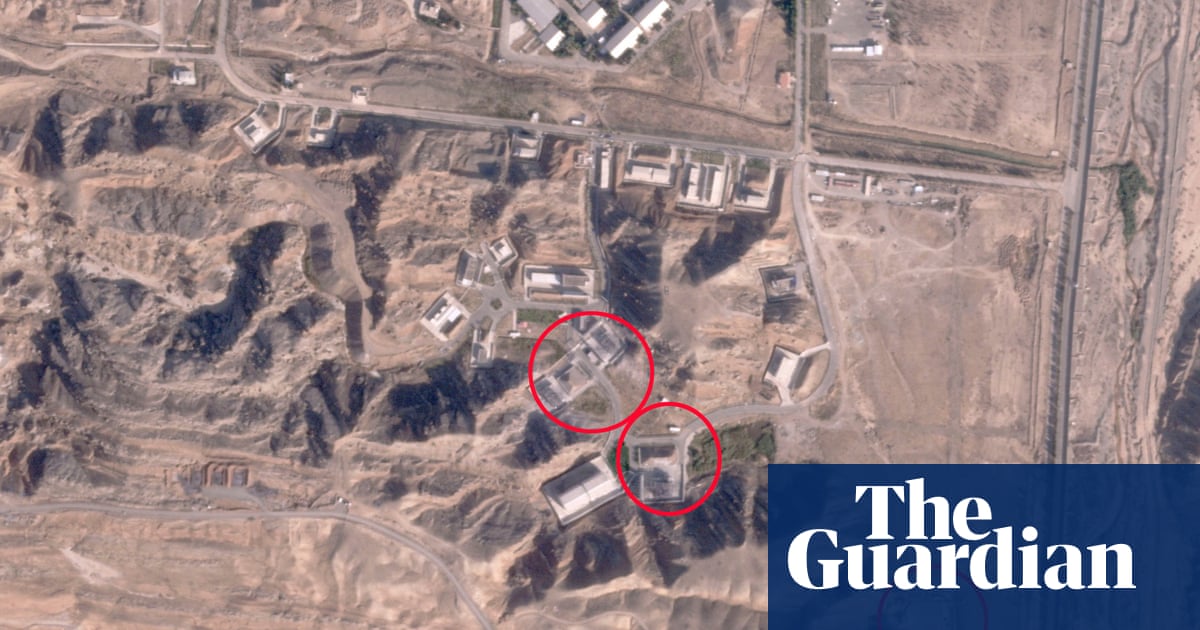Details have emerged suggesting Israel used precision air and drone strikes in its unprecedented attack on Iran this weekend to target air defence systems protecting crucial oil and gas facilities, as well as military sites linked to Tehran’s nuclear programme and ballistic missile production.
Israel openly attacked Iran for the first time on Saturday in the latest direct confrontation between the regional enemies, bringing the Middle East another step closer to a full-scale conflagration.
In the immediate aftermath, Iran appeared to downplay the airstrikes, which killed four soldiers. Fearing all-out war and shocks to the global oil industry, western leaders had urged Israel’s prime minister, Benjamin Netanyahu, not to target oil or nuclear facilities in the widely anticipated response to an Iranian ballistic missile salvo on Tel Aviv and military bases on 1 October. Iranian officials had repeatedly warned attacks on nuclear or energy infrastructure would cross a “red line”.
Satellite imagery of affected sites in Iran and details reported by the New York Times suggest that the Israeli leader heeded allies’ advice, but the locations of the strikes nonetheless signalled that Israel is capable of hitting high-value targets if the escalation continues.
The operation, codenamed Days of Repentance, appears to have been aimed at degrading Iran’s ability to attack Israel, as well as making the country more vulnerable to future airstrikes.
The Israel Defense Forces (IDF) said it focused on air defence, radar sites, and long-range missile production facilities. Israeli media reported it involved more than 100 jets and drones, and was carried out in two waves.
Citing three Israeli and three Iranian officials, the New York Times said that in the first phase of the attack, Israeli jets targeted air defence systems in Syria and Iraq, preventing Tehran’s allies from intercepting the aircraft en route.
In Iran, air defence systems were also attacked, with the aim of limiting Iran’s ability to fend off future attacks. Some of the targeted systems are supposed to protect important sites, including the Abadan oil refinery, the Bandar Imam Khomeini petrochemical complex, the gas field Tange Bijar, and Bandar port in the south of the country, the paper said.
Three Russian-made S-300 air defence systems around Tehran were also reportedly hit, as well as the Parchin and Parand military bases, it added. Social media videos appeared to show damage to a factory near the capital that builds oil and gas industry machinery.
Satellite imagery analysed by the Associated Press and Reuters showed one totally destroyed structure and several damaged ones at Parchin, near Tehran, a site the International Atomic Energy Agency says is linked to the Iranian nuclear programme. Two buildings appeared to have suffered damage at the nearby Khojir military base, which western analysts believe is a production site for long-range ballistic missiles.
The Tasnim news agency said Iran’s powerful Revolutionary Guards were not targeted, but the New York Times reported three missile manufacturing sites in Tehran province operated by the guards were attacked: Falagh, Shaid Ghadiri and Abdol Fath.
How many sites were targeted and the scale of the damage is still unclear, although Israeli media reported about 20 hits. Netanyahu has claimed that the Israeli operation had fulfilled its goals, rendering missile production sites used to attack Israel inoperative, as well as taking out air defence systems.
The Iranian army has not commented on the reported destruction at the Parchin, Khojir and Parand military bases. It said that “limited damage” was caused to air defence systems in Khuzestan, Ilam and Tehran but that the country had intercepted most of the Israeli projectiles.
In his first public comments on the attack, Iran’s supreme leader, Ayatollah Ali Khamenei, said on Sunday the event “should neither be minimised nor exaggerated”, and that military officials would discuss Iran’s next steps, suggesting retaliation may not be imminent.

